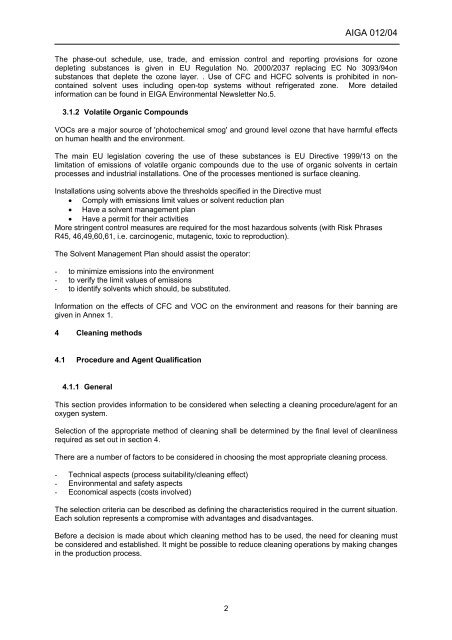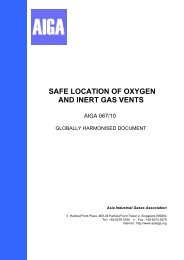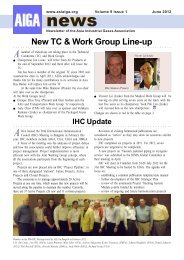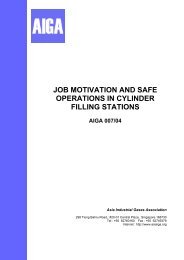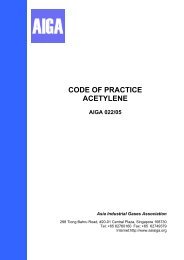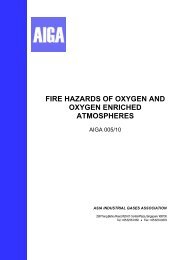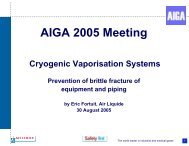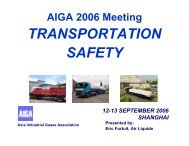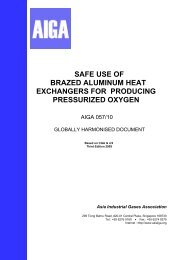CLEANING OF EQUIPMENT FOR OXYGEN SERVICE - AIGA
CLEANING OF EQUIPMENT FOR OXYGEN SERVICE - AIGA
CLEANING OF EQUIPMENT FOR OXYGEN SERVICE - AIGA
You also want an ePaper? Increase the reach of your titles
YUMPU automatically turns print PDFs into web optimized ePapers that Google loves.
2<br />
<strong>AIGA</strong> 012/04<br />
The phase-out schedule, use, trade, and emission control and reporting provisions for ozone<br />
depleting substances is given in EU Regulation No. 2000/2037 replacing EC No 3093/94on<br />
substances that deplete the ozone layer. . Use of CFC and HCFC solvents is prohibited in noncontained<br />
solvent uses including open-top systems without refrigerated zone. More detailed<br />
information can be found in EIGA Environmental Newsletter No.5.<br />
3.1.2 Volatile Organic Compounds<br />
VOCs are a major source of 'photochemical smog' and ground level ozone that have harmful effects<br />
on human health and the environment.<br />
The main EU legislation covering the use of these substances is EU Directive 1999/13 on the<br />
limitation of emissions of volatile organic compounds due to the use of organic solvents in certain<br />
processes and industrial installations. One of the processes mentioned is surface cleaning.<br />
Installations using solvents above the thresholds specified in the Directive must<br />
• Comply with emissions limit values or solvent reduction plan<br />
• Have a solvent management plan<br />
• Have a permit for their activities<br />
More stringent control measures are required for the most hazardous solvents (with Risk Phrases<br />
R45, 46,49,60,61, i.e. carcinogenic, mutagenic, toxic to reproduction).<br />
The Solvent Management Plan should assist the operator:<br />
- to minimize emissions into the environment<br />
- to verify the limit values of emissions<br />
- to identify solvents which should, be substituted.<br />
Information on the effects of CFC and VOC on the environment and reasons for their banning are<br />
given in Annex 1.<br />
4 Cleaning methods<br />
4.1 Procedure and Agent Qualification<br />
4.1.1 General<br />
This section provides information to be considered when selecting a cleaning procedure/agent for an<br />
oxygen system.<br />
Selection of the appropriate method of cleaning shall be determined by the final level of cleanliness<br />
required as set out in section 4.<br />
There are a number of factors to be considered in choosing the most appropriate cleaning process.<br />
- Technical aspects (process suitability/cleaning effect)<br />
- Environmental and safety aspects<br />
- Economical aspects (costs involved)<br />
The selection criteria can be described as defining the characteristics required in the current situation.<br />
Each solution represents a compromise with advantages and disadvantages.<br />
Before a decision is made about which cleaning method has to be used, the need for cleaning must<br />
be considered and established. It might be possible to reduce cleaning operations by making changes<br />
in the production process.


